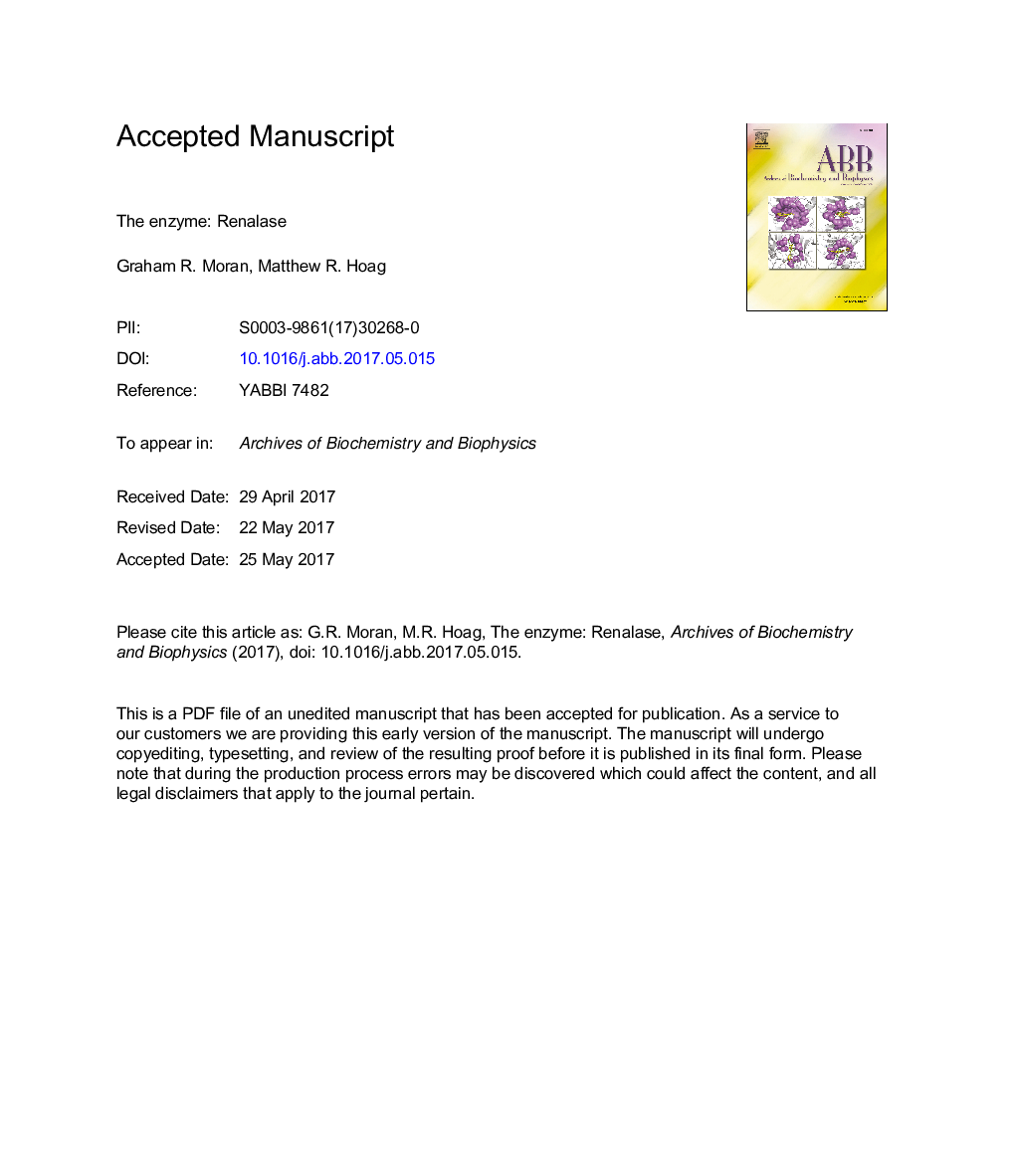| Article ID | Journal | Published Year | Pages | File Type |
|---|---|---|---|---|
| 8288967 | Archives of Biochemistry and Biophysics | 2017 | 38 Pages |
Abstract
Within the last two years catalytic substrates for renalase have been identified, some 10 years after its initial discovery. 2- and 6-dihydronicotinamide (2- and 6-DHNAD) isomers of β-NAD(P)H (4-dihydroNAD(P)) are rapidly oxidized by renalase to form β-NAD(P)+. The two electrons liberated are then passed to molecular oxygen by the renalase FAD cofactor forming hydrogen peroxide. This activity would appear to serve an intracellular detoxification/metabolite repair function that alleviates inhibition of primary metabolism dehydrogenases by 2- and 6-DHNAD molecules. This activity is supported by the complete structural assignment of the substrates, comprehensive kinetic analyses, defined species specific substrate specificity profiles and X-ray crystal structures that reveal ligand complexation consistent with this activity. This apparently intracellular function for the renalase enzyme is not allied with the majority of the renalase research that holds renalase to be a secreted mammalian protein that functions in blood to elicit a broad array of profound physiological changes. In this review a description of renalase as an enzyme is presented and an argument is offered that its enzymatic function can now reasonably be assumed to be uncoupled from whole organism physiological influences.
Related Topics
Life Sciences
Biochemistry, Genetics and Molecular Biology
Biochemistry
Authors
Graham R. Moran, Matthew R. Hoag,
